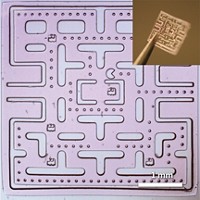Advertisement
Grab your lab coat. Let's get started
Welcome!
Welcome!
Create an account below to get 6 C&EN articles per month, receive newsletters and more - all free.
It seems this is your first time logging in online. Please enter the following information to continue.
As an ACS member you automatically get access to this site. All we need is few more details to create your reading experience.
Not you? Sign in with a different account.
Not you? Sign in with a different account.
ERROR 1
ERROR 1
ERROR 2
ERROR 2
ERROR 2
ERROR 2
ERROR 2
Password and Confirm password must match.
If you have an ACS member number, please enter it here so we can link this account to your membership. (optional)
ERROR 2
ACS values your privacy. By submitting your information, you are gaining access to C&EN and subscribing to our weekly newsletter. We use the information you provide to make your reading experience better, and we will never sell your data to third party members.
Biological Chemistry
Nanostraws Provide A Tunnel Into Cells
Nanotechnology: Alumina nanotubes allow molecules to sneak through cell membranes
by Erika Gebel
December 22, 2011

New nanometer-wide alumina tubes called nanostraws can puncture a cell’s membrane and create a lasting pipeline straight to its cytoplasm (Nano Lett., DOI: 10.1021/nl204051v). Researchers hope the nanostructures will allow scientists to deliver genetic material, such as small interfering RNAs, into cells.

Currently, when scientists want to slip molecular cargo past the cell membrane, they rely on delivery agents such as viruses and lipid vesicles. But these methods use expensive materials, require weeks of preparation, and don’t work with all cell types, says Nicholas Melosh of Stanford University. Meanwhile, he says, the cells themselves use simple, fast, passive routes to shuttle material back and forth between neighbors. For example, two adjacent eukaryotic cells directly connect their cytoplasms using gap junctions, which are protein-based channels.
Inspired by these junctions, Melosh and his team designed nanostructures that could provide such a passive pathway between a solution containing molecular cargo and the inside of a cell. To fabricate these nanostraws, the researchers applied a coating of alumina to the pores of a polycarbonate membrane commonly used in water purification. They used a process called atomic layer deposition to add one atomic layer at a time, creating alumina tubes of uniform thickness, each with a hole that is 70 nm in diameter. The chemists then partially removed the membrane using chemically reactive plasma, leaving behind a field of 1- to 2-µm-tall nanostraws embedded in a thin piece of polycarbonate.
The researchers next suspended the nanostraw mat over a chamber of fluid, with nanostraws pointing up, and spread a thin layer of cells on top. They reasoned that molecules in the solution filling the lower chamber would diffuse into the nanostraws and eventually into any cells punctured by the tubes.
When the team tested their device, they found that human cells remained healthy even with the perforations: The cells’ growth rates and gene expression profiles matched those of non-punctured cells. To check the efficiency of the nanostraws, the researchers studied how quickly molecules of three different sizes flowed through the tubes. First, they added small fluorescent molecules to the solution inside the chamber. By counting glowing cells, the researchers determined that small molecules made it into about 40% of cells. Next, they used cells expressing a fluorescent protein that stops glowing in the presence of specific ions. When they added a solution of those ions to the chamber, they found that the ions made their way into 70% of cells. But DNA plasmids were the least successful at moving through nanostraws. Plasmids containing the gene for a green fluorescent protein reached only about 10 to 15% of the cells. The plasmid results surprised Melosh, but he says the DNA’s large size may have hindered their transit.
Luke Lee of the University of California, Berkeley, sees many potential applications for Melosh’s nanostraw platform, such as delivering small proteins to turn genes on and off. “I wish he’d make thousands of these devices and disseminate them to biologists,” he says.




Join the conversation
Contact the reporter
Submit a Letter to the Editor for publication
Engage with us on Twitter